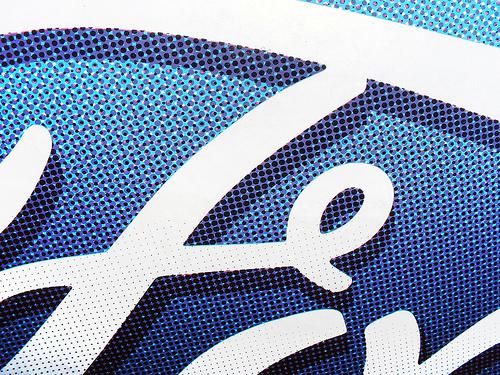Filed under: Investing
After five years in a steep bull market, we have seen some signs of weakness in stock prices lately. Nobody knows for certain what the future will bring, but it doesn't hurt to be prepared for different possibilities. In case of a market pullback, high-quality growth companies like Chipotle Mexican Grill , Netflix , and Tesla could be great candidates for an opportunistic purchase.

Source: Chipotle Mexican Grill
Chipotle for mouthwatering growth
Chipotle Mexican Grill is one of the most notable success stories in the restaurant industry during the last several years. The fast-casual category is gaining a lot of ground versus traditional fast food chains, and Chipotle is a growth leader in that exciting niche.
Chipotle has delivered a compounded annual growth rate of 19.3% per year through the last five years, and there is no slowdown in sight judging by its latest earnings report. Sales during the fourth quarter of 2013 jumped by 20.7% on the back of a big increase of 9.3% in comparable-store sales.
Considering demand strength, Chipotle still has exciting growth prospects in the U.S., and international markets are practically untapped as the company has less than 1,600 locations overall, and only 16 of them overseas. The company is also experimenting with new concepts such as Asian cuisine and pizza with ShopHouse and Pizzeria Locale, respectively, so Chipotle has enormous room for growth in the years ahead.
Chipotle trades at a considerable premium to other companies in the industry with a P/E ratio above 55, so the stock is incorporating aggressive growth expectations. A premium valuation is certainly well deserved in this case, but a market pullback could provide a convenient opportunity to grab this organic burrito with both hands while it's not as hot as usual.

Source: Netflix
Netflix is no house of cards
Netflix has been one of the biggest winners in the market lately. The stock is up by more than 120% in the last year alone, and for valid reasons. The company has consolidated its position as the undisputed leader in online streaming, a business with abundant opportunities for growth in the coming years.
Venturing into original content has been a big success for Netflix in terms of differentiating the company from the competition, and attracting the attention of viewers around the world with productions like House of Cards.
Netflix is not only rapidly growing its subscriber base, revenues are outgrowing content costs, and profit margins are on the rise. This means that Netflix is dissipating doubts regarding its ability to sustain both rapid growth and improving profitability over time.
Shares of Netflix don't come cheap, though -- the stock trades at a forward P/E above 58 -- so a market pullback could provide an opportunity to invest in this extraordinary growth story at a more attractive entry point.

Source: Tesla
Tesla is running at full speed
What Tesla has achieved during the last few years is nothing short of spectacular. The company is on its way to revolutionizing the automotive industry with its widely acclaimed Model S. Demand is exceeding production capacity, and the company is paving the road to not only delivering more units of the model, but also launching the new Model X, which is expected to reach the markets before the end of this year.
Not only that, but the company is also moving in the right direction in terms of profitability. Tesla is not yet profitable on a GAAP net-income basis, but the company has reached its goal of a gross margin of 25% without zero emission vehicle credit revenues, and it also produced a positive free cash flow of $40.3 million during the last quarter of 2013.
Tesla will face enormous challenges and uncertainties during the coming years, but if there's a company that can lead the electric vehicle revolution, it's certainly Tesla under the visionary leadership of Elon Musk.
On the other hand, the stock looks considerably overcharged after rising by a mind-blowing 510% during the last 12 months. Tesla trades at a forward P/E ratio above 60, so waiting for a dip before placing an order could be a sensibleidea.
Bottom line
The market is always uncertain, but no matter what happens in the short term, buying high-quality growth stocks with a long-term horizon tends to be a winning strategy over time, so market pullbacks are no reason to fear. On the contrary, the smart thing to do is capitalize on the opportunity to invest in extraordinary businesses at discounted prices. Companies such as Chipotle, Netflix, and Tesla are great candidates to add to your shopping list for a market pullback.
This stock can make your rich
Opportunities to get wealthy from a single investment don't come around often, but they do exist, and our chief technology officer believes he's found one. In this free report, Jeremy Phillips shares the single company that he believes could transform not only your portfolio, but your entire life. To learn the identity of this stock for free, and see why Jeremy is putting more than $100,000 of his own money into it, all you have to do is click here now.
The article 3 Companies for Your Shopping List in Case of a Market Pullback originally appeared on Fool.com.
Andrés Cardenal owns shares of Netflix. The Motley Fool recommends Chipotle Mexican Grill, Netflix, and Tesla Motors. The Motley Fool owns shares of Chipotle Mexican Grill, Netflix, and Tesla Motors. Try any of our Foolish newsletter services free for 30 days. We Fools may not all hold the same opinions, but we all believe that considering a diverse range of insights makes us better investors. The Motley Fool has a disclosure policy.Copyright © 1995 - 2014 The Motley Fool, LLC. All rights reserved. The Motley Fool has a disclosure policy.
Read | Permalink | Email this | Linking Blogs | Comments























